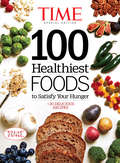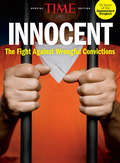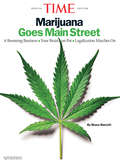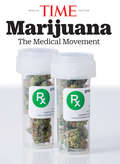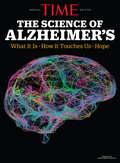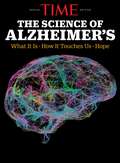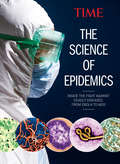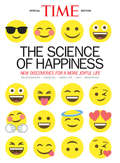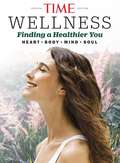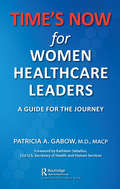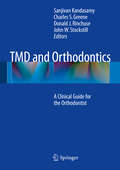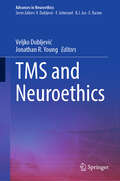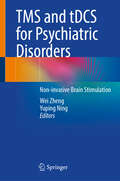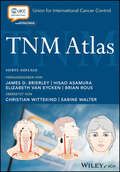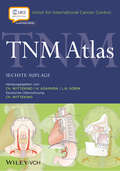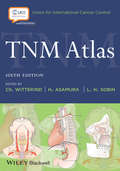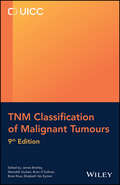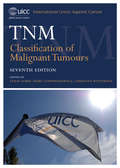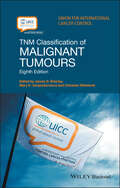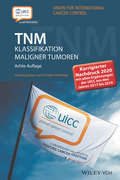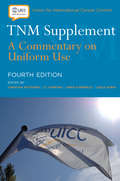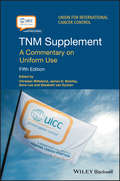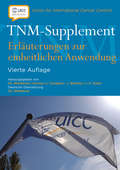- Table View
- List View
TIME 100 Healthiest Foods to Satisfy Your Hunger
by The Editors of TIMEMany of the most filling foods available are also some of the healthiest. This book contains a list of 100 of the most satisfying, hunger-quelling foods that are easy to find and taste great!
TIME Innocent: The Fight Against Wrongful Convictions
by The Editors of TIMETIME looks at those wrongfully convicted, and the fight to set them free.
TIME Marijuana Goes Mainstreet: A Booming Business - Your Brain on Pot - Legalization Marches On
by Bruce BarcottWelcome to the end of the war on pot. With more landmark legislation in 2016, marijuana has continued its march toward legalization and normalization, 29 states having gone medically legal. In this updated adaptation, based on Bruce Barcott's groundbreaking book Weed the People, we look at some of the key issues surrounding pot:What benefits has it shown in treating conditions ranging from glaucoma to multiple sclerosis to PTSD? How did it come to be classified as a Schedule I drug?Who are the harvesters, investors and entrepreneurs bringing pot out of the shadows and grow rooms and into the marketplace?How does such a marketplace come to exist amid a complicated regulatory framework?Where do we go from here, at a time when states are increasingly pro-legalization but a new federal administration could change things at any time?
TIME Marijuana: The Medical Movement
by The Editors of TIMECanabis has been used as medicine for 4,000 years. Now, with the majority of states legalizing medical marijuana, the U.S. is discovering this plant's full potential. Discover more in TIME Marijuana: The Medical Movement.
TIME The Science of Alzheimer's
by Editors of TIMEConfusing, mysterious and unknown, Alzheimer's is among the most-feared diseases because it strikes indiscriminately and there is no known cure. Now, in The Science of Alzheimer's, a new Special Edition from the editors of TIME, we draw back the curtain to reveal the latest research on what the disease is and what it is not, and how science is working to make Alzheimer's a manageable problem with a hopeful long-term prognosis, akin to diabetes or HIV. Go inside the latest research on different types of dementia, hereditary and environmental causes, new treatments, and more. Helpful lifestyle tips show how to ward off mental decline as we age, and case histories-including the stories of musician Glen Campbell and President Ronald Reagan, who bravely shared their diagnoses with the world-reveal the human face of Alzheimer's. We also look at the latest drugs being used to treat the disease and how there is hope in recent treatments and protocols, as well as alternative treatments that may be making a difference. Packed with authoritative information from the health editors at TIME, this guide helps everyone understand a frightening disease-and recognize the strides that are being made to fight it.
TIME The Science of Alzheimer's
by The Editors of TIMEIn TIME's The Science of Alzheimer's learn more about this disease that steals the self as well as the human ingenuity and dogged persistence that gives us hope for the future in the fight against it.
TIME The Science of Epidemics: Inside the Fight Against Deadly Diseases, from Ebola to Aids
by The Editors of TIMETIME's The Science of Epidemics brings deeper understanding of Ebola and other infectious diseases from plague to polio. TIME takes readers behind the headlines not only to look at what caused Ebola to spread, but how doctors are trying to fight the disease in Africa, what the US and other countries are doing to stop it from spreading and the impact it has on survivors and society. TIME looks into the battle against other diseases as well, including the campaign in Saudi Arabia against MERS-Middle East Respiratory Syndrome-and what doctors and scientists are doing to end the AIDS epidemic. TIME explores the work of virus hunters in the field, report on the new Enterovirus D68 and the ever-present and mutating flu virus, explain how science won the fight against polio, and chronicle the deadliest viruses of all time. Filled with the behind-the-scenes reporting people expect from Time, as well as the publication's magnificent photography and informative graphics, The Science of Epidemics is a book illuminates what medical researchers and doctors in the field are doing to save millions of lives from deadly diseases.
TIME The Science of Happiness: New Discoveries for a More Joyful Life
by The Editors of TIME"Don't worry, be happy." Sounds simple enough, yet many encounter setbacks in their pursuit of happiness. What if we could definitively say: "If you do this, you will achieve a happier and healthier life?" What if we could unlock the key to happiness? Enter Science.In an all new special edition from TIME, The Science of Happiness: New Discoveries for a More Joyful Life, editors investigate exclusive, cutting-edge research from the Lee Kum Sheung Center for Health and Happiness. Focusing in on the debate surrounding whether or not there is a direct relationship between happiness and health, this special edition explores the factors that affect happiness in three outlined sections--mind, life and spirit--and considers aspects such as positivity, optimism, purpose, family, finance, spirituality, and gratitude, in order to examine happiness from different angles. Although the research included in The Science of Happiness is a work in progress, it is a step toward unlocking the key to happiness by grounding a cute catchphrase in fact and science.
TIME The Science of Laughter
by The Editors of TIMEHave you ever wondered why we laugh? If giggling is contagious? If laughter really is the best medicine? Discover that and more in this special edition, TIMEThe Science of Laughter.
TIME Wellness
by The Editors of TIMEIn the midst of the nonstop world we live in, maintaining wellness is essential to good health. This new special edition from the editors of TIME, Wellness: Finding a Healthier You, defines wellness with a multi-faceted approach, because everyone approaches the topic differently. <P><P>Wellness looks at the current trends in wellness and a few fads, and breaks down wellness in "Wellness 101," which helps define the topic and provides guidelines for maintaining health and wellness at every age. <P><P>Additional sections include: advice on how to talk about wellness with your doctor; "Living Well" and "Mind and Body," which tackle how to build a healthier, happier family; rules on clean eating; and some personal stories from people who have transformed their lives. We round out the special edition with the ultimate wellness quiz, just to make sure you were paying attention. Whether you are new to the idea of wellness, or want to bring a more balanced approach to a certain aspect of your life, Wellness is an excellent guide.
TIME'S NOW for Women Healthcare Leaders: A Guide for the Journey
by Patricia A. GabowTIME’S NOW for Women Healthcare Leaders: A Guide for the Journey Women comprise over 80 percent of healthcare frontline employees, but they often hit the proverbial glass ceiling. Only 30 percent of healthcare C-suite Executives and less than 15% of CEOs are women. Moreover, while 51 percent of medical students are women, only 16 percent of the Department Chairs and Deans are women. Clearly, women are facing barriers to achieving their potential, limiting their ability to add their unique talents and skills to the tables of leadership. The author provides extensive detail on these barriers and approaches to their solutions. This is a practical "how-to" book that will help women in healthcare envision their ability to contribute and inspire them to lead. The author sees this as not only helping women, but also facilitating solving healthcare’s myriad problems, improving health and benefitting society. *** This book is a must-read primer for women seeking leadership. It is practical, thought provoking, and carefully researched, addressing why women’s leadership is important and how women can be better leaders. Gabow’s approach capitalizes on interviews with strong women leaders. She uses the notions she learned from the interviews coupled with research from the literature to create an easy-to-read, motivating, and challenging book for women and men! Nancy AgeePresident and CEO Carilion ClinicPast Chair American Hospital Association TIME’S NOW for Women Healthcare Leaders is filled with powerful examples of how women have overcome multiple obstacles and prevailed on their leadership journeys. It is a MUST read for women and men about the obstacles to be overcome, potholes to avoid, and the shout outs to be given to women who every minute, every hour, every day are committed to human caring. It has captured the heart and spirits of women from diverse backgrounds who have and continue to demonstrate their commitment to making society a better place for all! Linda Burnes Bolton, DrPH, RN, FAAN Senior Vice President and System Chief Equity Officer Cedars Sinai Health System This highly engaging book addresses the relative dearth of women leaders in healthcare through thoughtful assessment of how leaders’ values and actions can improve healthcare within healthcare organizations and systems. Dr. Gabow, an exceptional leader whose relentless passion for excellence for patients served by Denver Health earned her national renown, combines insightful observations from her own path with current statistics about women in medicine, experiences of other successful women leaders, and mentoring skills to offer wise counsel to all current and future leaders. The thoughtful distillation of practical wisdom offered here make this book a unique contribution and highly relevant to healthcare in America today. Carolyn Clancy, M.D. Past Director, Agency for Healthcare Research and Quality This insightful book is full of personal stories, honest reflections, and data-driven guidance from and about women leaders. It serves as a wonderful resource for those motivated to advance diverse and inclusive organizations. Karen DeSalvo, M.D., MPHChief Health Officer, Google HealthPast Acting Assistant Secretary for Health, US HHSNational Coordinator for Health Information Technology, US HHS
TMD and Orthodontics
by Sanjivan Kandasamy Charles S. Greene Donald J. Rinchuse John W. StockstillThis evidence-based book, featuring contributions from world-renowned experts, discusses in detail the functional anatomy of the temporomandibular joint as well as the aetiology, diagnosis, treatment and medicolegal implications of patients with temporomandibular disorders (TMD). Despite advances in our understanding of the aetiology of TMD and in developing current treatment rationales, a number of issues remain controversial. These include the extent to which the temporomandibular joint should be a central focus of orthodontic diagnosis and treatment, as well as the role that occlusion and malocclusion play in precipitating TMD symptoms. Indeed, few subjects in dentistry and the specialty of orthodontics are open to as many interpretations or misinterpretations as TMD. This textbook provides clinical orthodontists with essential information and guidance that will assist them in understanding and effectively managing this complex multilayered problem. Throughout, clear clinical guidelines are presented on the basis of current scientific and clinical evidence. TMD and Orthodontics will be a highly valuable chairside resource for orthodontists everywhere.
TMS and Neuroethics (Advances in Neuroethics)
by Veljko Dubljević Jonathan R. YoungAs transcranial magnetic stimulation (TMS) continues to expand from a tool of neuroscience research into a growing array of clinical applications, it presents a number of open questions that both invite and complicate ethical evaluation. Empirically supported concerns remain regarding interactions between TMS and psychiatric medications or other interventions, the potential for adverse effects in stimulated brain regions, and whether modulation of brain activity—particularly via changes in oscillatory states—might affect aspects of personhood. This volume explores the ethical landscape surrounding TMS in both research and clinical settings. Prior neuroethics literature has largely focused on theoretical implications of neurostimulation technologies, including conceptual clarification (e.g., invasiveness) and normative questions regarding the alignment of these technologies with societal values. However, while some empirical work has captured perspectives from TMS patients, many key voices—such as those of family members, clinicians, and underrepresented communities—have remained absent from scholarly discussions. Spanning historical reflection, theoretical debate, empirical analysis, and clinical insight, this collection features contributions from scholars and practitioners working at the intersection of neuroethics, neuroscience, psychiatry, and biomedical engineering. Part I of the volume offers historical and theoretical reflections, including the origins and growth of TMS research, racial disparities in access and participation, caregiver perspectives, and emerging issues related to cognitive enhancement, non-clinical use, and applications in social neuroscience and creativity. Part II turns to new directions and ethical issues in clinical TMS research, addressing treatment subgrouping, adolescent and geriatric use, mood and substance use disorders, suicidality, and the evolving regulatory landscape. Together, these chapters provide an interdisciplinary examination of the ethical, clinical, and societal dimensions of TMS. Whether as an introduction to the neuroethics of brain stimulation or as a resource for neuroscientists, clinicians, engineers, and ethicists, this volume aims to foster greater understanding and dialogue around the responsible development and application of TMS.
TMS and tDCS for Psychiatric Disorders: Non-invasive Brain Stimulation
by Wei Zheng Yuping NingThis book primarily examines the clinical utilization of TMS (Transcranial Magnetic Stimulation) and tDCS (Transcranial Direct Current Stimulation) for various psychiatric conditions including major depressive disorder, bipolar disorder, schizophrenia, substance use disorders, obsessive-compulsive disorder, attention deficit hyperactivity disorder, autism spectrum disorders, anxiety disorders, post-traumatic stress disorder, sleep disorders, and neurocognitive disorders. This book is tailored for students in clinical psychiatry, mental health professionals, and researchers specializing in psychiatric studies. It systematically presents the safety and efficacy of TMS and tDCS in the context of psychiatric disorders, while standardizing treatment protocols and operational techniques. The ultimate goal is to provide guidance for the clinical implementation of TMS and tDCS and to promote the standardization of these treatment modalities in the future.
TNM Atlas
by Christian Wittekind Sabine Walter James D. Brierley Hisao Asamura Brian Rous Elizabeth Van EyckenTNM Atlas Der maßgebende Atlas zur aktuellen TNM Klassifikation — jetzt mit noch mehr Illustrationen Das TNM System ist das weltweit am häufigsten verwendete Werkzeug, die Ausbreitung einer Krebserkrankung zu klassifizieren und in Stadien einzuteilen. Herausgegeben in Zusammenarbeit mit der UICC (Union for International Cancer Control) stellt der TNM Atlas, Siebte Auflage, die illustrierte Version der TNM Klassifikation, Achte Auflage, dar. Dieses Werk unterstützt mit erstklassigen anatomischen Darstellungen bei der praktischen Anwendung des TNM Klassifikationssystems. T- und N-Kategorien werden mit klaren und einfach zu verstehenden Abbildungen illustriert, ergänzt durch ausgewählte tomographische Aufnahmen aus der klinischen Praxis. Inhaltlich vollkommen überarbeitet, basierend auf der aktuellen TMN Klassifikation Mit mehr als 300 farbigen Abbildungen, die die anatomischen Besonderheiten jeder Tumorerkrankung akkurat und detailgetreu darstellen Unverzichtbares Werk nicht nur für die Diagnose, sondern auch für Ausbildung und für Aufklärungsgespräche mit Patient⋆innen Die in Genf ansässige UICC ist eine weltweit anerkannte Organisation, deren zentrale Aufgabe die Tumorklassifikation und Krebsbekämpfung ist. Ihr TNM Atlas ist ein wertvolles Nachschlagewerk für Onkolog⋆innen, Chirurg⋆innen, Patholog⋆innen, Mitarbeitende in Krebsregistern und onkologisches Pflegepersonal, sowie für Krebsforschungsinstitute und entsprechende staatliche Einrichtungen und nichtstaatliche Organisationen.
TNM Atlas
by Christian WittekindHerausgegeben in Zusammenarbeit mit der UICC, stellt dieser Atlas wie schon in den Vorauflagen die T und N Kategorien der unterschiedlichen Tumore graphisch akkurat dar. Alle Abbildungen wurden für diese 6. Ausgabe komplett neu gezeichnet und sind jetzt durchgehend vierfarbig.
TNM Atlas
by H. Asamura Christian Wittekind Leslie H. SobinThis book presents the illustrated version of the TNM Classification of Malignant Tumours, Seventh Edition, promoting the uniform application of the TNM classification in cancer practice. Now featuring beautiful, useful full-color medical artwork, this book is designed as an aid for the practical application of the TNM classification system by illustrating the T and N categories in clear, easily understood graphics. The aim of this presentation is twofold: to reach a more standardized understanding and documentation of the anatomic spread of tumours, and to further enhance the dissemination and use of the TNM classification.
TNM Atlas (UICC)
by James D. Brierley Elisabeth Van Eycken Hisao Asamura Brian RousA fully illustrated guide to the current TNM classification (8th Edition) and staging system The Union for International Cancer Control’s (UICC) TNM classification system is the most widely used cancer classification and staging system in the world. It is used to describe the anatomical extent of disease and is, therefore, essential to patient care, research and cancer control. This seventh edition of the TNM Atlas provides health-care professionals with a detailed pictorial guide to the system, demonstrating its practical application via clear, direct text and an array of full-color medical illustrations. The atlas features: Specially produced content, created to reflect the most recent iteration of the TNM classification of malignant tumours, the 8th Edition More than 300 full-color medical illustrations covering all anatomical sites of cancer involvement Quick-reference material that is ideal for use in clinical and educational settings The revised seventh edition of the TNM Atlas is a valuable resource for all medical, surgical, and radiation oncologists, anatomical and surgical pathologists, cancer registrars, oncology nurses, physician extenders, international cancer care centers and NGOs dedicated to cancer control.
TNM Classification of Malignant Tumours (UICC)
by James Brierley Brian O’Sullivan Brian Rous Elizabeth Van Eycken Meredith GiulianiThe essential reference on cancer stage returns as a fully revised edition Describing cancer stage is one of the most important elements of oncological practice. Clinical research and clinical care depend on an accurate assessment of cancer stage and prognostic factors. The TNM Classification of Malignant Tumours serves as the globally recognised standard reference for describing cancer stage and assessing treatment results. Now fully updated to reflect the results of the latest clinical research, it is indispensable for all clinicians, cancer registrars and researchers who work with malignant tumours. Readers of the ninth edition of TNM Classification of Malignant Tumours will find: Updates in many tumour sites including, nasopharynx, HPV associated oropharynx, lung, thymus, mesothelioma, appendix, anal canal, cervix, vulva and prostate carcinoma; Revised and updated sections on Essential TNM and paediatric cancer staging; New classifications for medulloblastoma, cutaneous lymphoma, parathyroid carcinoma, adrenal medulla and extra-adrenal paraganglia tumours; Revised classification of prognostic factors for many malignancies. TNM Classification of Malignant Tumours is an essential resource for anyone involved in cancer care, research or cancer control.
TNM Classification of Malignant Tumours: Illustrated Guide To The Tnm/ptnm Classification Of Malignant Tumours (Uicc International Union Against Cancer Ser.)
by Ch. Wittekind L. H. Sobin M. K. GospodarowiczTNM Classification of Malignant Tumours, 7th Edition provides the latest, internationally agreed-upon standards to describe and categorize cancer stages and progression. Published in affiliation with the International Union Against Cancer (UICC), this authoritative guide contains important updated organ-specific classifications that oncologists and other professionals who manage patients with cancer need to accurately classify tumours for staging, prognosis and treatment. The major alterations addressed in the 7th Edition concern carcinomas of the oesophagus and the gastroesophageal junction, stomach, lung, appendix, biliary tract, skin, and prostate. In addition, there are several entirely new classifications: gastrointestinal carcinoids (neuroendocrine tumours) gastrointestinal stromal tumour upper aerodigestive mucosal melanoma Merkel cell carcinoma uterine sarcomas intrahepatic cholangiocarcinoma adrenal cortical carcinoma. A new approach has also been adopted to separate anatomical stage groupings from prognostic groupings in which other prognostic factors are added to T, N, and M categories. These new prognostic groupings, as well as the traditional anatomical groupings, are presented for oesophageal and prostate carcinomas. Visit www.wileyanduicc.com for more information about the International Journal of Cancer and our other UICC book titles
TNM Classification of Malignant Tumours: Illustrated Guide To The Tnm/ptnm Classification Of Malignant Tumours (Uicc Ser. #Vol. 6)
by Christian Wittekind Mary K. Gospodarowicz James D. BrierleyTNM Classification of Malignant Tumours eighth edition provides the latest, internationally agreed-upon standards to describe and categorize cancer stage. Published in affiliation with the Union for International Cancer Control (UICC) Arranged by anatomical region, this authoritative pocket sized guide contains many important updated organ-specific classifications There are new classifications for p16 positive oropharyngeal carcinomas, carcinomas of the thymus, neuroendocrine tumours of the pancreas, and sarcomas To facilitate the collection of stage data for cancer surveillance in low and middle income countries there are new sections on Essential TNM and Paediatric Cancer Stage New colour presentation
TNM Klassifikation maligner Tumoren: Korrigierter Nachdruck 2020 mit allen Ergänzungen der UICC aus den Jahren 2017 bis 2019
by Christian WittekindDie TNM-Klassifikation ist das weltweit am häufigsten verwendete System für die Beschreibung der anatomischen Ausbreitung maligner Tumoren, gegliedert in einen klinischen und einen pathologischen Teil. Sie wird in Zusammenarbeit mit der Union for International Cancer Control (UICC) herausgegeben und umfasst im Wesentlichen alle anatomischen Regionen gemäß den WHO-Richtlinien zur Klassifikation der Krankheiten in der Onkologie. Dieser korrigierte Nachdruck der 8. Auflage berücksichtigt rund 150 Änderungen und Korrekturen aus den Jahren 2017 bis 2019, die nach Erscheinen der 8. Auflage von der UICC bekannt gegeben wurden.
TNM Supplement
by Christian WittekindThe TNM Supplement, 4th Edition, includes new, detailed definitions of anatomical sites, regional lymph nodes, and TNM categories. It answers questions that frequently arise during daily use of the TNM system. Importantly, the TNM Supplement expands on the minimum requirements for pathological classification of individal tumour sites and enumerates the recommended criteria for each. Published in association with the Union for International Cancer Control, it provides oncologists with complementary material related to TNM staging not covered in TNM Classification of Malignant Tumours, 7th Edition.
TNM Supplement: A Commentary on Uniform Use (UICC)
by Christian Wittekind James D. Brierley Anne Lee Elisabeth Van EyckenThe Union for International Cancer Control's (UICC) TNM classification system is the most widely used cancer classification and staging system in the world. It is used to describe the anatomical extent of disease and it is essential to patient care, research and cancer control. This fifth edition of the TNM Supplement: A Commentary of Uniform Use offers practitioners a wealth of material intended to complement the system's day-to-day use. The volume features: Updated definitions of terms used in cancer staging. New sections on carcinomas of the thymus, sarcomas of the spine and pelvis and soft tissue sarcomas of the head and neck, and comprehensive updates to the head and neck carcinomas, carcinomas of the lung and neuroendocrine tumours sections. Frequently asked questions from the UICC helpdesk. The Supplement may be treated as a companion text to the recent eighth edition of the TNM Classification of Malignant Tumours (978-1-119-26357-9), supporting the correct and uniform application of the TNM classification system. The TNM Supplement can also be utilised as a standalone book, providing explanations and examples to answer many questions that arise during the daily use of the TNM cancer classification and staging system, particularly in unusual cases.
TNM-Supplement: Erlauterungen zur einheitlichen Anwendung
by Ch. Wittekind Vierte AuflageWie schon in den vorherigen Supplements ist die 4. Auflage unverzichtbar zur korrekten und einheitlichen Verwendung der Klassifikation von malignen Tumoren. Erstmals wird hier dem Prognostic Factors Project ein Kapitel gewidmet. Unverzichtbar für alle Onkologen und Pathologen.
